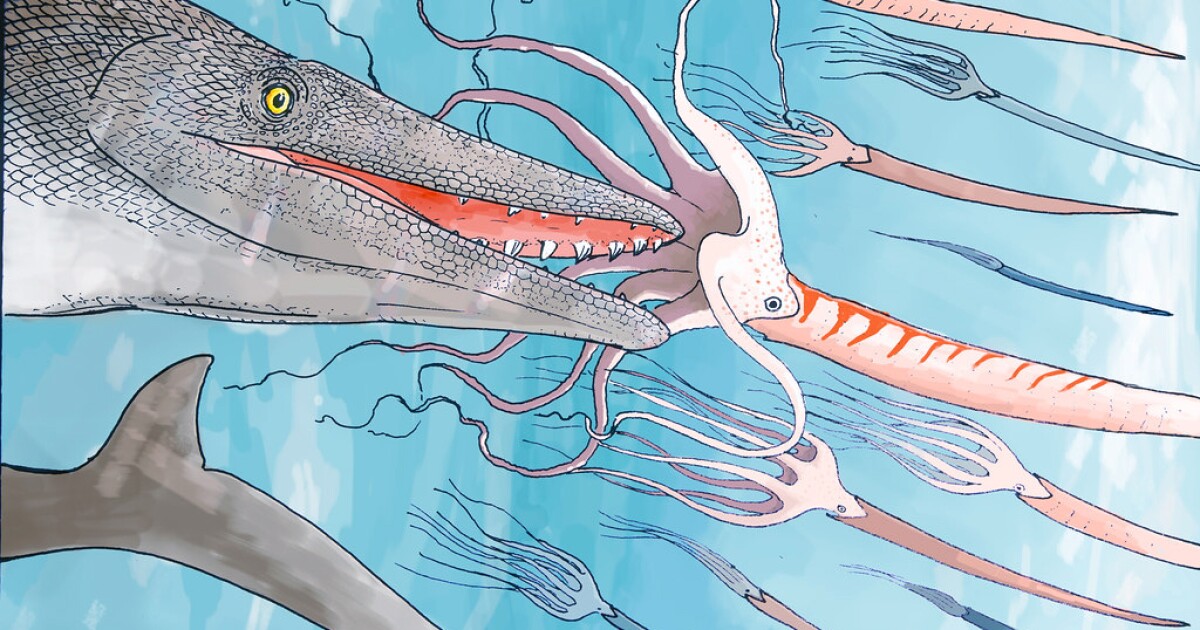Scientists have found a brand new species of mosasaur, a large sea-dwelling lizard that dates again to the age of the dinosaurs, that stands out due to its distinctive, star-shaped enamel.
It’s thought that mosasaurs and different marine reptiles had been on a speedy evolutionary path till about 66 million years in the past when a 6-mile-wide (10-km-wide) area rock referred to as the Chicxulub impactor, slammed into the Earth off the coast of what is now the Gulf of Mexico, wiping out the dinosaurs and round 90% of life on the planet.
The Maastrichtian Age occurred 72.1 million to 66 million years in the past, in the course of the Cretaceous Interval. The Oulad Abdoun Basin in Morocco is a crucial website for vertebrate fossils; most, primarily marine-based, specimens have been unearthed there. The phosphate deposits within the space vary from the Late Cretaceous to the Early Paleogene, a interval of round 25 million years.
And it’s in Sidi Chennane, within the south Oulad Abdoun Basin, that scientists discovered this new species of mosasaur from the Maastrichtian Age, which they named Stelladens mysteriosus. Though it shared some similarities with different mosasaurs, what stood out to scientists was its unusually formed enamel.
Not like most mosasaurs with bladelike, serrated ridges on the front and back of their enamel which helped them eat their prey, Stelladens had between 4 and 6 blades operating vertically down the tooth. The blades give the enamel the looks of the tip of a Phillips-head screwdriver.

Nick Longrich
“It’s a shock,” mentioned Nick Longrich, lead creator of the research. “It’s not like several mosasaur, or any reptile, even any vertebrate we’ve seen earlier than.”
A number of enamel had been discovered to have the identical distinctive form, suggesting to the scientists that it was not brought on by pathology or mutation. They suppose the Stelladens’ enamel point out that they ate a specialised weight loss plan however can’t be certain what it consisted of.
“We don’t know what this animal was consuming, as a result of we don’t know of something comparable both alive at present, or from the fossil document,” mentioned Longrich. “It’s doable it discovered a singular strategy to feed, or perhaps it was filling an ecological area of interest that merely doesn’t exist at present.”
The scientists seen the small, stout enamel had been worn on the guidelines, which dominated out a weight loss plan of soft-bodied prey, however they weren’t sturdy sufficient to crush closely armored animals like clams or sea urchins.
“Which may appear to recommend it’s consuming one thing small, and frivolously armored – thin-shelled ammonites, crustaceans, or bony fish – but it surely’s laborious to know,” Longrich mentioned. “There have been bizarre animals residing within the Cretaceous – ammonites, belemnites, baculites – that not exist. It’s doable that this mosasaur ate one thing, and occupied a distinct segment, that merely doesn’t exist anymore, and which may clarify why nothing like that is ever seen once more.”
Ammonites had been a bunch of marine mollusks, belemnites had been squid-like cephalopods that possessed an inner skeleton, and baculites had been cephalopods with an nearly straight shell.
The invention of Stelladens exhibits that even after years of uncovering fossils from Morocco, the world continues to be wealthy with new species ready to be found.
“We’re not even near discovering every part in these beds,” mentioned Longrich. “That is the third new species to look, simply this 12 months. The quantity of range on the finish of the Cretaceous is simply staggering.”
The research was printed within the journal Fossils.
Supply: College of Tub


